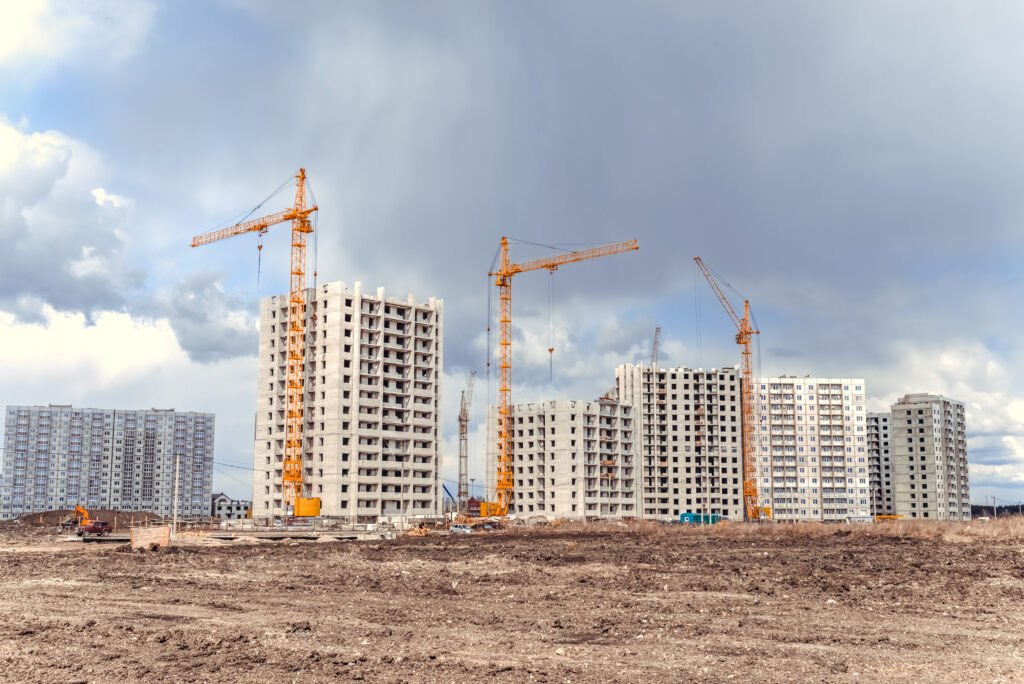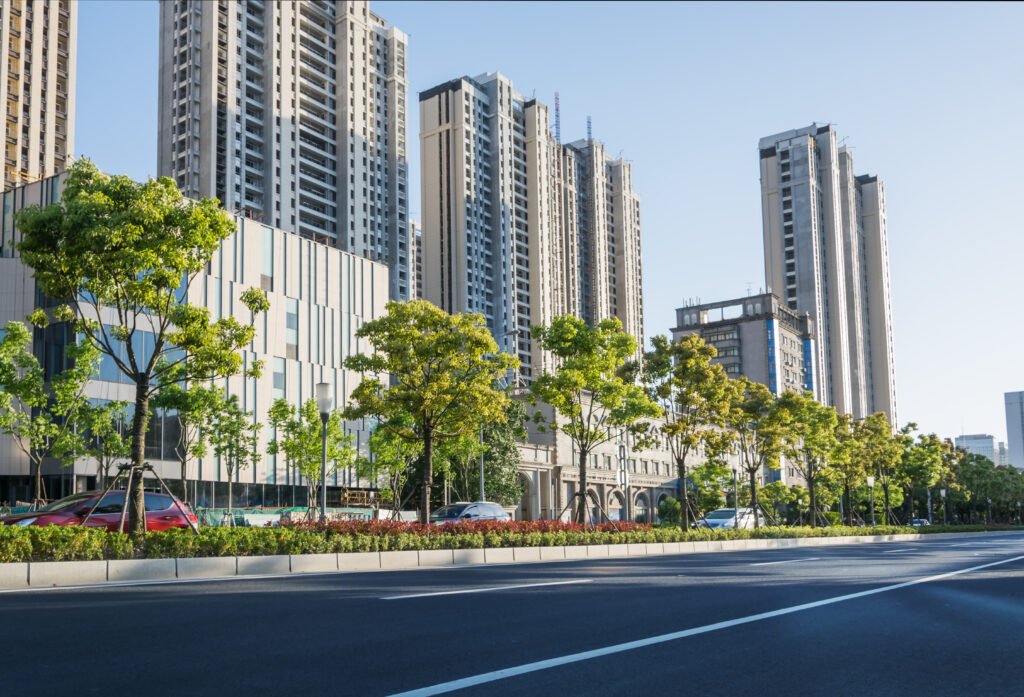Beyond the City Limits: Urban vs. Suburban Living in the US

Where you want to live is a big decision to make. Particularly in 2025, when the debate between suburban and urban living remains as important as ever. With changing housing trends, lifestyle choices, and work habits, there are many factors to consider.
In this blog, we discuss the pros and cons of urban vs suburban living in the US and explore the real estate trends. We hope this helps you to make the best choice!
Urban vs Suburban Pros and Cons
Urban areas are the heart of action, full of cultural attractions, convenience, and vibrant energy. Here are some advantages of living in an urban area:
- Accessibility
Urban areas usually have massive networks for public transportation. So, it’s easier to get around in the city without a car. Living in the city also means you’re closer to shops, healthcare facilities, restaurants, entertainment venues, and more.

- Social and Cultural Opportunities
Urban areas offer a wide range of activities, from nightlife and theatre to museums and dining options. There are more live music pubs, eclectic restaurants, bars, and cafes. Along with these, urban areas also provide enough chances for networking and socializing, especially for young professionals.
- Employment Opportunities
There are more opportunities for employment and career growth in the cities. Various industries make cities their hub, and when they build complexes in an area, they also push the real estate market.
However, there are certain challenges as well. Mostly, it’s the cost of living, space noise and crowding, and constraints that provide people with reasons to move from the city to the suburbs.

Now, known for family-friendly, spacious, and tranquil environments, let us look at the benefits of suburban living for families or more.
- Comfort and Space
Suburbs usually offer larger yards and spacious homes, providing more room for outdoor and family activities. They are also usually less congested and quieter, which makes living very peaceful.

- Family-Oriented Communities
Suburbs generally have safe neighborhoods and highly-rated schools. This makes them ideal for families who have children. Suburban areas also offer a robust community sense with recreational activities, parks, and local events.

- Affordability
Living costs and housing expenses are what make suburban living better than urban living. Suburbs are usually more affordable when compared to urban areas.
Commuting from the suburbs to the city is one of the major disadvantages. It takes longer to go to work or visit the city. Suburbs also have fewer cultural, entertainment, and dining options. Due to the lack of a proper public transportation system, people are more dependent on cars when it comes to commuting and running errands.
The Urban and Suburban Conundrum
Now that you know the main differences between urban and suburban, you can understand which fits you better. If you work from home, you can work from anywhere, so the suburbs are the best. It’s also great if you have a family. Meanwhile, the city offers more in terms of culture and entertainment. Next, we need to discuss the real estate market with proper investment insight.
Urban vs Suburban Real Estate Trends
The changing dynamics of the suburban and urban markets in 2025 offer unique opportunities for investors. Trends such as the rapid growth of hybrid “surban” communities to the resurgence of urban centers need to be understood to optimize your investment.
Housing options in urban vs suburban areas require balancing innovative approaches with conventional insights.
- Mixed-Use Developments
Many suburban markets are experiencing demand for projects that combine office, residential, and retail spaces. These integrated projects cater to a dynamic lifestyle, creating high-quality working and living spaces.

- Investing in Infrastructure
Suburban areas are investing in digital connectivity, walkable neighborhoods, and public transit to attract young families and remote workers. These can solve the commuting problem and reduce dependency on cars.
- Sustainability
Many developments in the suburbs include energy-efficient designs and green building practices to accomplish sustainability goals. Communities are also prioritizing sustainable living, including walkable spaces and solar power in their configurations.

- Revitalized Urban Options
Certain cities, despite the issues during the pandemic, are strongly rebounding. Enhanced demand and infrastructure of walkable neighborhoods are reviving the urban centres, presenting interesting opportunities for real estate investments.
- Better Immigration Flows
Immigration is boosting the urban population, increasing demand for multifamily urban services and housing. Diverse offerings in the cities also bring forth better economic opportunities that are appealing to immigrants. For example, Toronto is witnessing a massive immigration spike, which drives demand for multifamily retail spaces and housing.
- Mixed-Use Green Projects
Cities such as Boston and Chicago are spearheading mixed-use and green developments to attract businesses and residents. These projects enhance urban livability, fortify property values, and lower environmental impact.
- Urban Revival Driven by Tech
From property management systems driven by AI to smart cities, technology plays an important role in urban revival. These innovations maximize urban infrastructure and enhance tenant satisfaction.
Urban vs Suburban Living in the US–Investment Takeaway
Suburban developments are increasingly leaning towards a hybrid environment, creating spaces for workers who want a stable place to plant their roots. These markets are integrating sustainability, amenities, and connectivity, which positions them well for long-term growth.
If investing in the urban market, it’s a fortuitous time. The infrastructure is undergoing revitalization, which helps investors capitalize on durable growth. Walkable neighborhoods that mix retail and housing spaces remain extremely desirable. Urban areas that blend technological advancements with green initiatives offer incredible potential for investment opportunities. If you want to learn how to invest better, check this blog out!

Challenges of Urban and Suburban Living
While there are enough opportunities in the suburban and urban markets, there are some challenges, too.
- Climate Risks
Coastal areas, such as Miami, face dangers from rising sea levels. This necessitates investments in measures like climate adaptation. Investors need to integrate long-term resilience when examining properties in areas vulnerable to climate risks.
- Infrastructure Gaps
Secondary and tertiary real estate markets might lack adequate infrastructure to promote growth. This creates possible developmental bottlenecks. Usually, addressing these gaps requires immense private and public investments. For instance, the lack of strong systems of public transit in specific suburban markets can cut off their connectivity and growth potential.

- Zoning and Regulatory Challenges
Navigating zoning limitations and local regulations can halt projects and cost investors more. It becomes critical to proactively engage with the local authorities in this case. For example, San Francisco is an urban area where strict zoning laws have capped off high-density construction.
When selecting assets and markets, prioritizing long-term risks is crucial. To make informed decisions, it becomes important to identify resilient opportunities in a competitive field.
Urban vs Suburban Living in the US–Which Should You Choose?
Investors have diverse opportunities in 2025 when it comes to the best of both urban and suburban living. Suburban growth is pushed forward by hybrid models, and they offer strong potential. Meanwhile, urban cores are revitalizing for growth and stability through green upgrades and infrastructure overhaul. Investing strategically in these areas can offer both community benefits and financial returns.
In the meantime, here are certain factors you can consider when deciding between an urban and suburban lifestyle:
- Lifestyle Choices
Do you enjoy a fast-paced environment where amenities are easily accessible? Or do you prefer a more spacious, quieter living space?

- Family Requirements
If you have kids, consider the local schools’ qualities. Think about how family-friendly the community is and how much outdoor space is available.
- Budget
To understand which option is financially correct, do a budget evaluation. Consider transportation, daily, and housing expenses during the evaluation.
- Commute and Career
Take into account your workplace’s location and the amount of time it takes you to commute to and from your potential suburb or urban home.
Choosing between suburban and urban living is more than just an investment choice. It’s a personal decision that is influenced by what you and your family need. Do you move to a bustling city for better career opportunities? Or do you move into a peaceful suburb for a break from the bustle? At Home Improvement Ideaz, we can only give you the facts, the pros and cons, the challenges, and discuss the real estate trends. The rest is up to you!
FAQs
- Are millennials moving to the suburbs?
Yes, millennials are moving to the suburbs in huge numbers. Millennials may have been associated with urban living, but they are now seeking the family-friendly and affordable amenities that suburbs usually offer.
- What is the demand for housing in the US?
Demand in the US housing market is outpacing supply. The market is presently facing a considerable imbalance. This shortage has been a continuous problem for many years. However, there are signs that the pace of growth is easing down the road.
- Are cities or suburbs growing faster for real estate?
Suburbs have been experiencing a faster growth rate in real estate than cities. This trend can be attributed to factors such as remote work, the real estate cycle stage, and particular city development projects.
- What is the demand for urban housing?
The demand for urban housing is high and increasing due to migration to cities and rapid urbanization. This demand is enforced by factors like urban amenities, better living conditions, and employment opportunities.
![]()

As a lifelong DIY enthusiast, Alex Barton is never afraid to go the extra mile to save a few bucks! From seamless interior decor hacks to effective DIY home renovation tips, he shares a myriad of his experiences for you to unleash your creativity.


















